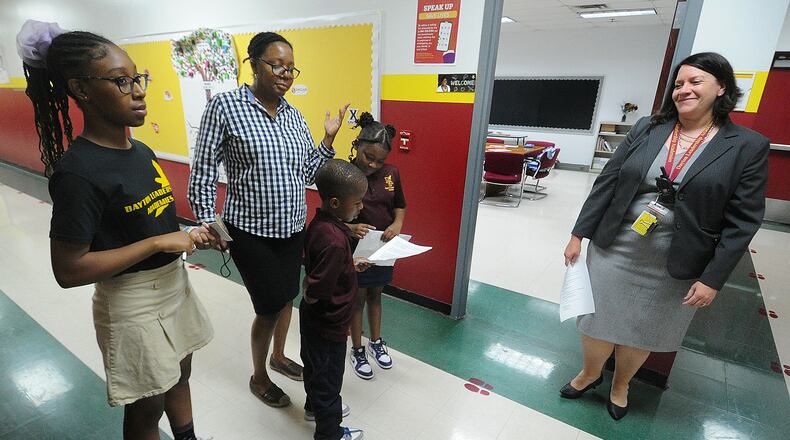The study analyzed the value-added estimates of student growth from the Ohio Department of Education and Workforce, which is a measure that ODEW calculates as the gains in test scores year over year on state report cards — from the 2021-22 school year and 2022-23 school year.
Aaron Churchill, Fordham’s Ohio research fellow, said he is hopeful that charter schools see the study as a form of accountability.
“I think it’s incumbent on everyone in the charter sector to continue to work on behalf of students and be accountable for their outcomes,” Churchill said.
Lavertu is a professor at OSU’s John Glenn College of Public Affairs who has worked with Fordham in the past, and became a senior research fellow for Fordham last year. He said the results of this study are in line with previous studies done pre-pandemic, but that the growth gap this time was slightly smaller.
Lavertu’s analysis pointed to charters achieving more in English language arts and math, and he suggested that increasing funding at charter schools may show even more gains in those areas. He also noted that students at urban districts and urban charter schools experienced larger achievement declines during the pandemic than students in the average Ohio public school.
Jennifer Hogue, the director of legislative services for the Ohio School Board Association, which represents public school boards across Ohio, said the study is limited to one aspect of how students do in school.
“This study doesn’t take into account areas such as academic performance, graduation rate, student opportunities and resources, career-tech program offerings or available extracurricular activities,” she said. “All of Ohio’s public school districts offer a large number of educational opportunities and experiences to ensure that students are prepared for life after graduation.”
Ohio’s charters have room for improvement, Lavertu said. Compared to charter schools in Massachusetts, New York, and Rhode Island, Ohio’s charter schools posted 9 to 13 extra days of learning — meaning their learning was equal to being in school for that additional length of time compared with the district students.
In 2019, those other states posted learning gains of 41, 75 and 90 extra days per year. Ohio, in 2019, posted 28 learning days in English and 10 days in math.
Lavertu said he hopes the study is a way to monitor charter schools’ performance and helps lawmakers decide how to invest public funds. He said charter schools can increase competition and challenge district schools to perform better.
He said he also hopes families who must decide where their kid will go to school will find some use in the study.
“Parents are busy and it can be hard to distinguish between district schools, charter schools, and private schools,” he said. “Perhaps a report like this increases awareness that, on average, charters are quality educational options.”
The Montgomery County Educational Service Center gets state funding for public schools but provides services for all types of schools in the county. MCESC Superintendent Shannon Cox said that quality charter schools are key to success.
But Cox said comparing public schools to charters is not always an “apples to apples,” thing. Charter school students come from families who actively made a choice about their school, so those schools can require more from parents because of that, Cox said. Public schools are required to accept anyone who lives in their district.
“I think the bigger picture is that when parents make the decision to send their kids to charter schools and when communities decide to invest in charter schools, there should be a set of criteria that says this is a high-quality charter school,” she said. “These are just other educational options.”
David Lawrence, Dayton Public Schools superintendent, who also worked for the Dayton STEM School previously, agreed with Cox, but said he’d like to see even more data comparing students.
“I would love to see socioeconomic data and how charter schools perform with kids who live in poverty,” he said. “And I will say this, I was just at the ESC the other day with 16 other superintendents. I was talking to their superintendent (Cox) and we in particular, Dayton Public, tend to do better internally with kids who are poor.”
About the Author

